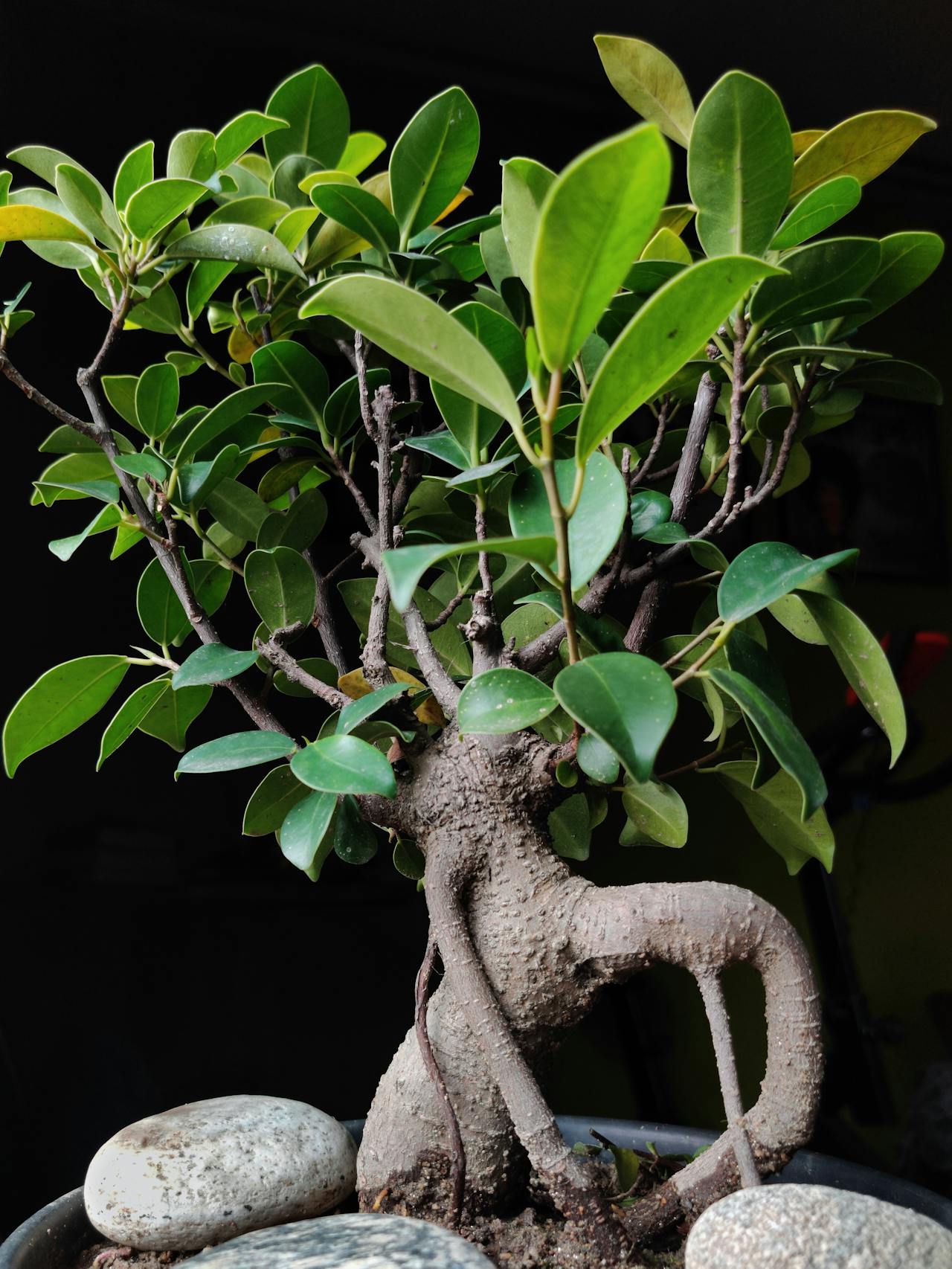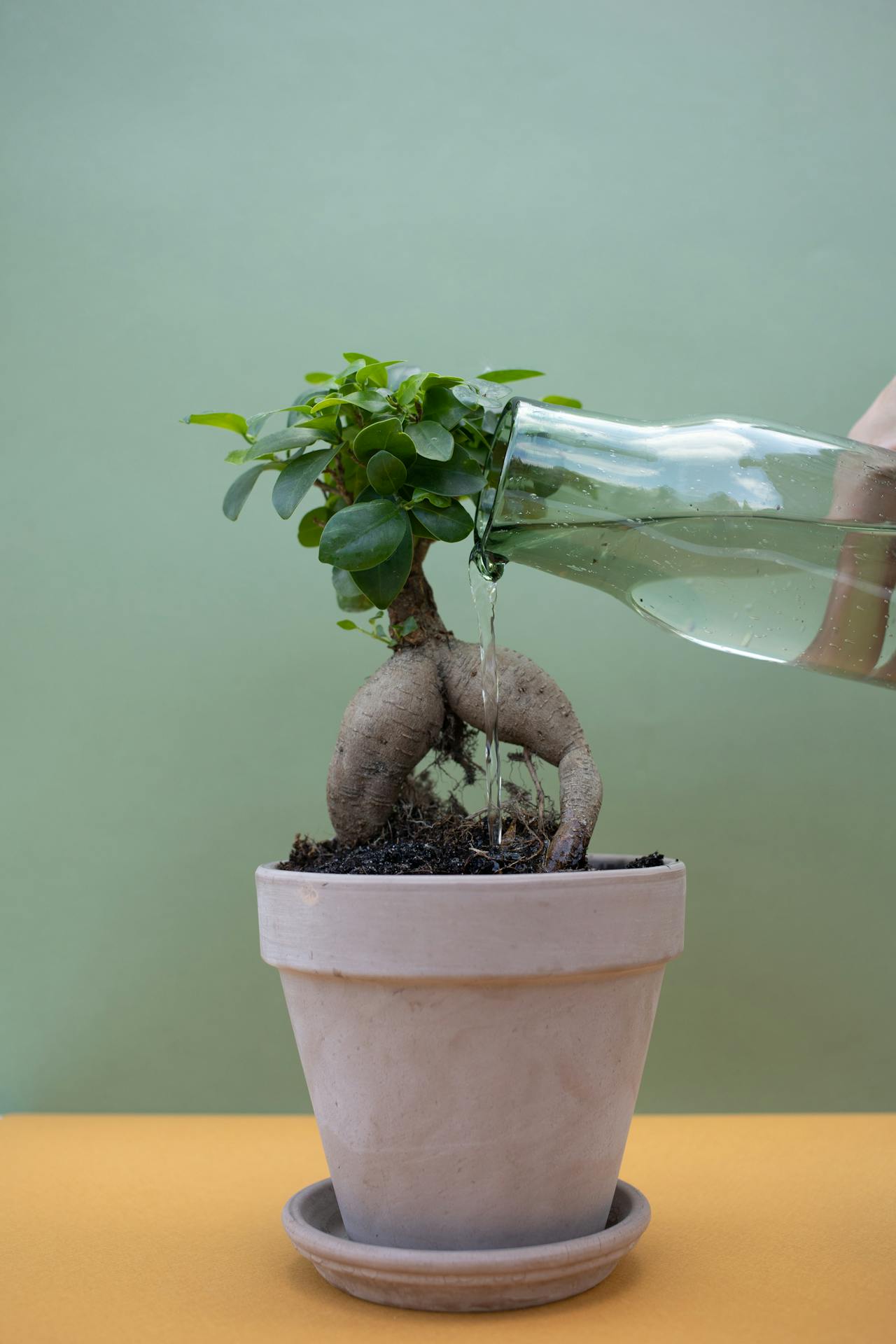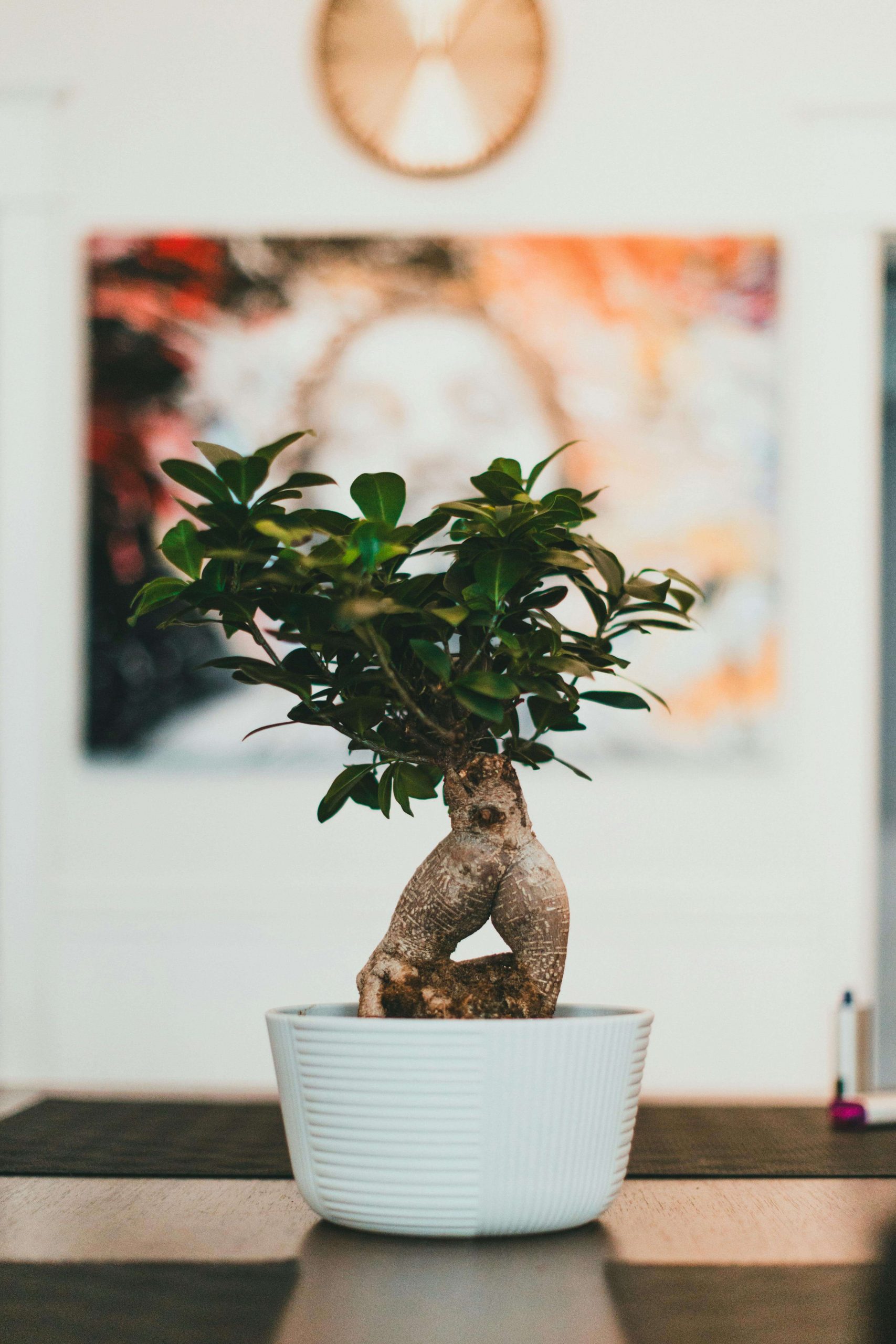Ginseng bonsai, also known as bonsai ficus, is a houseplant that possesses an exotically shaped thick belly trunk and compactly grown leaves.
This Southeast Asian tropical plant is greatly prized for its elevated roots and potbelly trunk. The aerial roots of this interesting houseplant grow above the ground.
It is ideal for pruning because of its dense, dark green, oval-shaped leaves. However, touching it causes skin irritation and allergic reactions as its sap is toxic to both humans and dogs. In any area, the ginseng bonsai creates a whimsical and organic statement.
Read more: Essential tips for growing and maintaining your Bonsai plant

Image credit: Pexels
How to grow the ginseng bonsai
Light: This plant requires 6 to 8 hours of sunlight. If you are growing it indoors, place it near the window. If you are growing it outdoors, place it in a spot where it can get adequate sunlight.
Soil: Ginseng bonsai thrives in well-draining, slightly acidic soil. Therefore, when potting or planting it a premix of acidic soil is ideal. You can also make your own acidic soil using pine bark, lava rock, and a product called akadama, which holds water and slowly breaks down over time.
Water: Water the plant frequently, and avoid overwatering. Thorough watering is required in hot, dry weather.

Image credit: Pexels
Not only is the ficus ginseng an exotic feature in any room, but it is also a rewarding plant to grow with proper care. Its sculpted trunk and packed leaves render it beautiful, especially when grown as a bonsai. Just take care to be wary of its toxic sap and always handle it gently.
By providing it with the right balance of sunlight, humidity, and well-draining acidic soil, you’ll be able to enjoy this tropical beauty all year round—whether indoors or out.
ALSO SEE: 7 BONSAI MYTHS YOU SHOULDN’T BELIEVE
Featured image: Pexels

